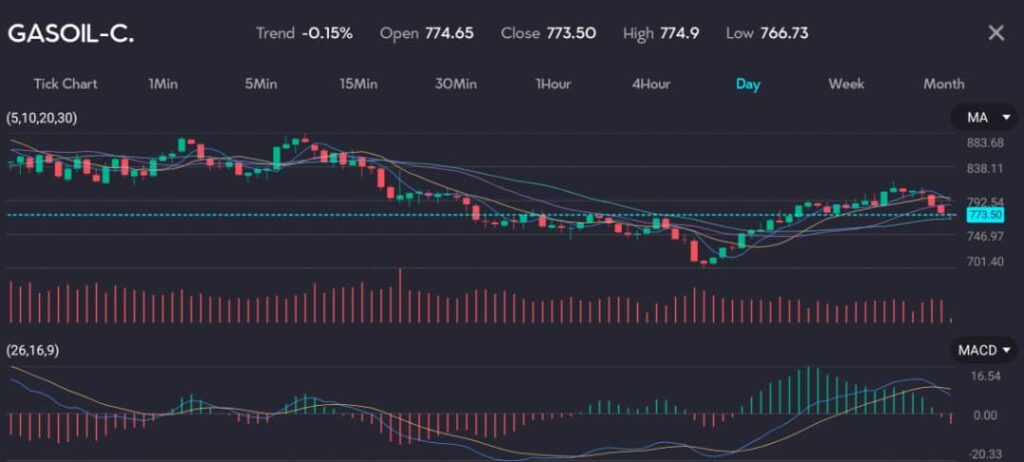Key points:
- Oil prices decrease as US Gulf supply concerns ease
- Weak inflation data from China pressures oil prices
Oil prices dipped on Wednesday as the impact from Hurricane Beryl dissipated and inflation data highlighted persistently weak consumer demand in top crude importer China.

Picture: Oil prices decline as seen on the VT Markets app.
Brent and WTI crude prices fall as US gulf supply concerns ease
As of 0632 GMT, Brent futures were down 58 cents, or 0.69%, at $84.08 a barrel, following a 1.3% drop in the previous session. U.S. West Texas Intermediate (WTI) crude was down 48 cents, or 0.59%, to $80.93 a barrel, after a 1.1% decline the day before. Both contracts have lost about 3% over the past three sessions as the Texas energy industry appeared relatively unscathed by Hurricane Beryl, which hit the region on Monday.
Oil and gas companies began restarting operations on Tuesday. Some ports reopened, and most producers and facilities were ramping up output, although some facilities sustained damage and power restoration is still ongoing.
Concerns over demand in China also weighed on prices. Consumer prices in the world’s second-largest economy grew for a fifth month in June but missed expectations, while producer price deflation persisted.
Middle East ceasefire talks in Doha could impact oil supply
In the Middle East, negotiations to secure a ceasefire in the Gaza war will resume in Doha, with the intelligence chiefs of Egypt, the United States, and Israel in attendance. This development is closely watched by the market for potential impacts on oil supply from the region.
Limiting losses in oil prices were comments from U.S. Federal Reserve Chair Jerome Powell, suggesting the case for interest rate cuts is becoming stronger. Lower interest rates are expected to spur more economic growth and, consequently, increase oil consumption.
Additionally, U.S. crude oil and gasoline inventories fell by 1.923 million barrels and 2.954 million barrels, respectively, according to market sources citing American Petroleum Institute figures on Tuesday.
You might be interested: Oil prices fall with US inventory increase
This indicates that summer fuel demand is steady and driving the rebound after days of declines. The official data from the U.S. Energy Information Administration will be released at 1630 GMT, providing further insight into inventory levels and potential impacts on prices.
Start trading now — click here to create your live VT Markets account.









